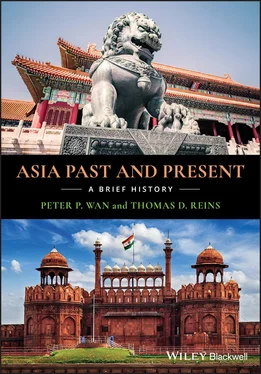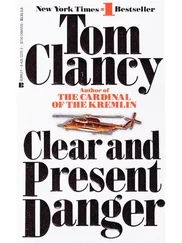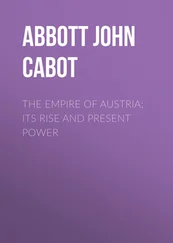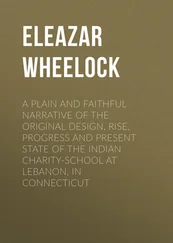Before the Great War, capitalism and democracy—broadly defined—seemed the destined, if difficult, paths to economic and political success. The industrial nations did not offer cookie‐cutter guidelines to modernization, the differences among them often being significant. Both Japan and Germany, for example, could at best be considered nations “transitioning” to democratic practice, and both of their economies had modernized with considerable state intervention. Intellectuals across Asia realized this, and indeed many had witnessed it firsthand as students or political exiles in Japan. So long as modernizing prescriptions could be carried on in a flexible framework, particular cultures could pick and choose those aspects of modernization required for success as well as the means by which to internalize them to their nations. By this time, loyalty to one’s nation‐state had surpassed one’s loyalty to its culture. Nationalism, not culturalism, would serve as the chief instrument of liberation and modernization.
World War I upset that default assumption in several ways. First, the 1917 Bolshevik Revolution in Russia produced a rival communist model of development. Second, the tenuous unity of the imperial powers, particularly regarding Asia, had splintered during the war. Not only did that conflict pit one imperial camp—the Germans and the Central Powers—against another, the Allies headed by Great Britain. But fissures developed in the Allied camp. Ally Japan’s attempted expansion into China—the Twenty‐One Demands of 1915—produced immediate British and American opposition. But even as Japan became democratic in 1919, it had long been harboring and now openly championed a specific Asian model of modernization. And finally, the Great War ushered in waves of pessimism and clouds of doubt as to the effectiveness of not only capitalism and democracy but also Western civilization itself.
The interwar years between 1919 and 1937, when World War II began with Japan’s formal invasion of China, deepened the gloomy outlook. The Treaty of Versailles ending the Great War satisfied almost no one; radical Nazi, Fascist, and Communist movements sprouted up globally; new thought emerging in psychology, physics, philosophy, and the humanities seemed to produce not a comfort caused by greater understanding, but an anxiety rooted in intellectual confusion. The economic depression of the 1930s appeared to seal the fate of capitalism and democracy, as most industrial nations showed signs of heading for some form of state‐controlled societies. That is to say, some form of authoritarianism seemed the likely future. It might not be the outright totalitarianism of the Soviet Union or Nazi Germany or the dictatorships of Fascist Italy and Spain, and militarist Japan. But neither would it be the liberal politics and economics of nineteenth‐century Europe and America.
At the same time, global conflict strengthened independence movements. World War I resulted in the European colonial powers withdrawing much of their colonial military and bureaucracy away from the colonies to deal with adversaries threatening the homeland. This allowed anticolonial organizations to expand in a less restrictive environment. World War II eventually resulted in nearly every colonial regime in Asia being removed, initially by Japan and ultimately by the United States and its allies. While Japan dismantled Western colonial regimes, it instituted its own Greater East Asia Co‐Prosperity Sphere. As the war raged on, two developments transpired to insure the end to colonial rule in the near future. First, combatants on both sides attempted to enlist indigenous organizations and individuals to join their fight, and with war’s end, most everyone in Asia had access to weaponry. The second was America’s determination to terminate colonial rule globally. Moreover, Britain’s July 1945 general election brought to power the Labour Party, which had promised to begin the decolonization process.
Imminent independence forced Asia’s leadership—whether traditionalist, reformist, or revolutionary—to put together a comprehensive platform for self‐rule. Most still questioned the efficacy of the capitalist and democratic models of development. Consider some of the more important leaders who did emerge before, during, and after World War II: Mohandas Gandhi, Ho Chi Minh, Achmed Sukarno, and Mao Zedong—none of them stood tall for capitalism and democracy. And even of those who did accept some variation of capitalism and/or democracy—now redeemed somewhat by victory in World War II—they did so with less than roaring enthusiasm: Yoshida Shigeru in occupied Japan, Jawaharlal Nehru in India, Chiang Kai‐shek in Taiwan, Filipino presidents with the exception of Ramon Magsaysay, South Korean presidents, and Singapore presidents. Colonial Hong Kong and Macao remained such until the 1990s. Even in the early twenty‐first century, several nations have not yet begun or have taken only baby steps toward participatory government—North Korea, Vietnam, and Burma/Myanmar, for example.
Capitalism and democracy slowly emerged in the wake of World War II. The Cold War (1945–1991) between the United States and the Soviet Union energized America’s efforts in Asia to provide counter‐models to communist regimes in North Korea and mainland China as well as to insurgency movements in much of decolonizing Asia. In the process, Washington often put anticommunism ahead of democratic development. These efforts, chiefly in Japan, the Philippines, South Korea, Taiwan, Thailand, and South Vietnam, involved the infusion of much‐needed capital, advanced technology, American markets, and political support—with military assistance, if necessary. Although political support and other aid depended to some extent on local efforts to broaden political participation and enhance economic opportunity, most often American support depended on an Asian ruler being less politically ruthless and more economically effective than the likely alternative. Transitions to democracy and markets, though important to Washington, remained secondary to the clash between “East” and “West.”
The struggle between the United States and its allies and the Soviet Union and its allies concentrated on winning in three principle arenas: first, military; second, the decolonizing world; and, third, economic growth. Even though military supremacy remained primary, the Cold War setting would be played out between the West’s surrogates and the East’s surrogates, thus hopefully minimizing the likelihood of a direct military confrontation between the United States and Soviet Russia. This contest as well would not be the brief sprint that World War II turned out to be for America. Instead it would be a marathon, seen as such in the 1940s and into the 1980s. As such, it became a test of wills that alone was a leading index of which system, communist or capitalist, would win the hearts and minds of the decolonizing and developing world, including all of Asia. Just as significant as the will to prevail was the ability of one (broadly defined) system or the other to meet the needs of Asia’s newly freed nations and people.
Well into the 1960s, Soviet Stalinist or Chinese Maoist forms of communism appeared to feature all the earmarks of front‐running models, while elsewhere highly statist (India) and/or authoritarian (South Korea and Taiwan) regimes seemed to provide the other prototypes for modernization. America’s withdrawal from Vietnam and at first blush from Asia in the mid‐1970s, the Soviet invasion of Afghanistan along with the Iranian occupation of the American Embassy in Teheran in the late 1970s, America’s slumping economy, its Vietnam syndrome, and what President Jimmy Carter called its “malaise” made it all but certain that Washington’s influence globally, and undoubtedly in Asia, would gradually decline. On the surface, at least, competitive politics and markets appeared headed for the endangered species list, Japan being the only likely exception. Those nations not already communist or that had been on friendly terms with the United States beat hasty paths to Beijing and Moscow to acknowledge the expected victorious powers in that part of the world.
Читать дальше












